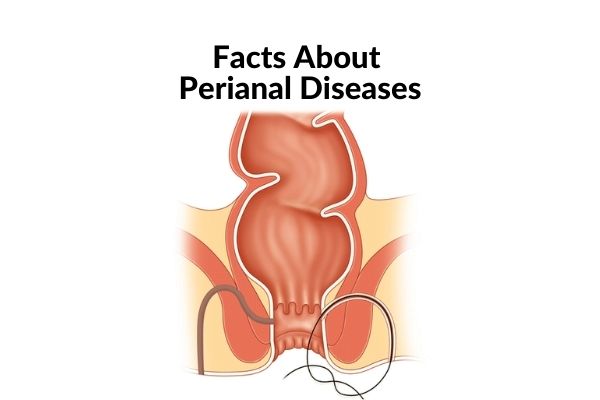Facts About Perianal Diseases :
Hello friends, today we shall discuss and will know some facts about perianal diseases. In a lay man’s language, every disease at the anus is named as piles.
But medically there are four different ailments. Piles- also called haemorrhoids, Fissure in ano, Perianal abscess and Fistula in ano. We shall discuss these conditions one by one considering their presenting symptoms and treatment.
First talking about piles, these are normal elevations or anal cushions containing blood vessels in the anal canal. When someone has constipation these cushions enlarge in size due to constant increased pressure due to straining at the time of defecation. So they enlarge in size from 1st degree to 4th degree, while 1st to 3rd degree remain inside the anus, the fourth-degree piles is prolapse of piles outside the anus which cannot be reposited inside. The commonest complaint of piles is PAINLESS BLEEDING! This is why a patient with piles presents late to the doctor as she/he never notices the bleeding as it’s painless, and realises it once the piles start prolapsing or when she/he gets breathless due to significant blood loss over the years. So looking back after motion if there is fresh blood in stools is very important. And immediately take a physical check-up and treatment done by a general surgeon before its too late. The treatment can be conservative for 1st and 2nd-degree piles if no significant bleeding and surgery in the form of LASER/conventional surgery to excise the piles/or stapler haemorrhoidectomy. All treatment modalities are equally effective.
The second ailment is Fissure in ano. This is a cut through the mucocutaneous area of the anal verge due to hard stools or due to increased anal pressure. The main symptom of Fissure is PAINFUL BLEEDING! This pain brings the patient immediately to the doctor and the treatment can be conservative by medicines or if the Fissure is long-standing with skin tags then in the form of surgery. The surgery here is relaxing the tight internal anal sphincter partially called lateral internal sphincterotomy. Sometimes the chronic Fissure ulcer with the skin tag is also excised during surgery.
The third ailment is Perianal Abscess. This is an infection of the anal glands leading to painful swelling in the perianal region. This leads to fever and sepsis, the sepsis may prove life-threatening, so immediate attention to such symptoms to be paid and advice of a general surgeon is taken. Almost all the time it needs surgery in the form of cutting open of the abscess under anaesthesia. If someone bears with the pain and neglects it, then either it bursts on its own inside or outside the anal canal or the patient goes in septic shock and is brought to the hospital in an emergency. The treatment as said is intravenous antibiotics and surgery.
Such perianal accesses culminate into the fourth ailment that is Fistula in ano. Such infection of the anal gland and the abscess forms a tract inside out the rectum. In this ailment, a patient has symptoms of opening in the perianal region which discharges pus on and off. The treatment of fistula in ano is also surgery. In this surgery, the fistula tract is excised or laid open by conventional method or by LASER energy.
Not to forget about any bleeding per anus can be a sign of cancer of the anal canal or rectum and should be evaluated by a general surgeon immediately.
So, now we have significant insight about the perianal conditions and their symptoms and treatment. Next time you find such symptoms in yourself or your family or friends, don’t sit at home. Get a general surgeon’s consultation done.
We will discuss about the post-operative care of perianal surgeries in the next blog.
Thank you.

